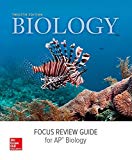
Introduction:
The skeleton provides support, protection, rigidity and the surface for attachment of muscles. There are several other significant roles which the skeleton plays in the body. There are different kinds of skeleton which are present in the animals, namely-hydrostatic skeleton, exoskeleton, and endoskeleton.
Answer to Problem 1A
Correct answer:
The coelom of earthworm, trunk of elephant, and muscular foot of clam are examples of hydrostatic skeleton. Therefore, option (b) is correct.
Explanation of Solution
Explanation for the correct answer:
In certain animals, the fluid-filled coelom or the gastrovascular tract behaves as the hard skeleton. This kind of skeleton is known as the hydrostatic skeleton. This uses the pressure of the fluid for providing resistance and support to the muscle contraction. The coelom of earthworm is filled with the fluid. The foot of the clam and the trunk of elephant contain cells which are filled with the fluid; the fluid provides rigidity to the organelles.
Option (b) is given as “hydrostatic”.
As, “the coelom of earth worm, the cells in the muscular foot and trunk of elephant consists of fluid that act as hydrostatic skeleton”, is the right answer.
Hence, option (b) is correct.
Explanations for incorrect answers:
Option (a) is given as “exoskeleton”.
The exoskeleton is not present in the earthworm, clam, and trunk of elephant. So, it is a wrong answer.
Option (c) is given as “jointed”.
There is no such kind of skeleton named as joined. So, it is a wrong answer.
Option (d) is given as “longitudinal”.
There is no such kind of skeleton named as longitudinal. The longitudinal cells are present in the earthworm but they are not present in the clam and elephant. So, it is a wrong answer.
Hence, options (a), (c), and (d) are incorrect.
The coelom of earthworm consists of fluid which acts as the hydrostatic skeleton. The cells of the foot of the clam and the trunk of elephant consist of fluid which acts as the hydrostatic skeleton and provides rigidity to the part of the body.
Want to see more full solutions like this?
Chapter 39 Solutions
Mader, Biology © 2016, 12e (Reinforced Binding) AP Focus Review Guide (AP BIOLOGY MADER)
 Human Anatomy & Physiology (11th Edition)BiologyISBN:9780134580999Author:Elaine N. Marieb, Katja N. HoehnPublisher:PEARSON
Human Anatomy & Physiology (11th Edition)BiologyISBN:9780134580999Author:Elaine N. Marieb, Katja N. HoehnPublisher:PEARSON Biology 2eBiologyISBN:9781947172517Author:Matthew Douglas, Jung Choi, Mary Ann ClarkPublisher:OpenStax
Biology 2eBiologyISBN:9781947172517Author:Matthew Douglas, Jung Choi, Mary Ann ClarkPublisher:OpenStax Anatomy & PhysiologyBiologyISBN:9781259398629Author:McKinley, Michael P., O'loughlin, Valerie Dean, Bidle, Theresa StouterPublisher:Mcgraw Hill Education,
Anatomy & PhysiologyBiologyISBN:9781259398629Author:McKinley, Michael P., O'loughlin, Valerie Dean, Bidle, Theresa StouterPublisher:Mcgraw Hill Education, Molecular Biology of the Cell (Sixth Edition)BiologyISBN:9780815344322Author:Bruce Alberts, Alexander D. Johnson, Julian Lewis, David Morgan, Martin Raff, Keith Roberts, Peter WalterPublisher:W. W. Norton & Company
Molecular Biology of the Cell (Sixth Edition)BiologyISBN:9780815344322Author:Bruce Alberts, Alexander D. Johnson, Julian Lewis, David Morgan, Martin Raff, Keith Roberts, Peter WalterPublisher:W. W. Norton & Company Laboratory Manual For Human Anatomy & PhysiologyBiologyISBN:9781260159363Author:Martin, Terry R., Prentice-craver, CynthiaPublisher:McGraw-Hill Publishing Co.
Laboratory Manual For Human Anatomy & PhysiologyBiologyISBN:9781260159363Author:Martin, Terry R., Prentice-craver, CynthiaPublisher:McGraw-Hill Publishing Co. Inquiry Into Life (16th Edition)BiologyISBN:9781260231700Author:Sylvia S. Mader, Michael WindelspechtPublisher:McGraw Hill Education
Inquiry Into Life (16th Edition)BiologyISBN:9781260231700Author:Sylvia S. Mader, Michael WindelspechtPublisher:McGraw Hill Education





